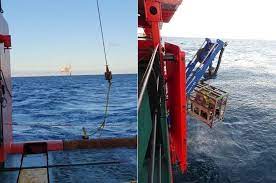The consortium partners behind the Project Greensand have developed a new monitoring technology that has successfully monitored that the stored CO2 in the North Sea subsoil is at the right location.

Deployment of monitoring tech for Project Greensand (Courtesy of TGS)
Project Greensand’s consortium partners have deemed successful the new seismic monitoring technology developed specifically for the project as frequent seismic monitoring is essential for the safe and permanent storage of CO2.
The new technology ensures more frequent control of the Nini West field in the North Sea, while at the same time achieving less impact on the environment and climate, the project consortium claims.
A wide range of consortium members are behind the newly developed technology, including the French company SpotLight.
“After the first CO2 storage, it was important for us to demonstrate the efficiency and flexibility of our monitoring solution. Among other things, we did this because we were able to quickly carry out the first monitoring of the reservoir and thereby obtain important information about where the stored CO2 is located in the reservoir.
“The operation was a great success, where we have collected high-quality data with safety and efficiency in mind. This enables Project Greensand to set new standards for CCS surveillance,” said Habib al Khatib, CEO of SpotLight.
To remind, on March 8, 2023, Project Greensand marked a major milestone with the first-ever injection of CO2 in the North Sea.